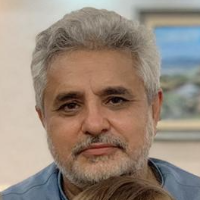Comparison of the Viewpoints of Jalal Al-e Ahmad and Dariush Shayegan on Iranian Contemporary Art Emphasizing the Issue of Identity
Author(s):
Article Type:
Research/Original Article (دارای رتبه معتبر)
Abstract:
Rereading first-hand texts on contemporary Iranian art and identifying the type of logical connection between contemporary art and thought in Iran can be considered as a key issue in the evaluation of contemporary Iranian culture and art. Simultaneous with the decline of the authority of traditional art and the rise of Western art in Iran, this art was not able to communicate with the Iranian audience as traditional art was. From this date on, a dilemma arose in Iranian art; more commonly referred to as the "identity crisis" and then a part of contemporary thought in Iran attempted to evaluate this crisis of identity and separation between society and contemporary art based on its identity-oriented perspective. Perhaps it can be expressed that identity is a set of individual or collective characteristics as well as cultural, psychological, philosophical, biological and historical characteristics which signifies unity or similarity, and distinguishes a particular person or community from other individuals or groups in a specific time and place. In this study, in order to compare the viewpoints of Jalal Al-e Ahmad and Dariush Shayegan on Iranian contemporary art, the process of how Iranian intellectuals are treated in a concise way has first been studied, and then, Jalal Al-e Ahmad’s and Dariush Shayegan's views on the Iranian contemporary art are considered separately. These views are directly influenced by their approaches to the issue of identity and their analyses and interpretations of the kind of exposure of Iranians to the new world. Mostly dispersed articles and cases have been published, through which one can, on the one hand, explore and identify the genre of their thinking about the type of contemporary art and contemporary world in the cultural and social layers of Iran. On the other hand, some kind of connection between some contemporary artists and contemporary scholars have been found, in order to finally identify the intellectual roots of Jalal Al-e Ahmad and Dariush Shayegan, with an emphasis on their type of approach, and the influence of these roots on the formation of the readings that led to the writing of articles in the field of theoretical studies of contemporary Iranian art, as well as the approach regarding these two thinkers’ thoughts about the Iranian contemporary art and the impact of these approaches on their writings in this case.According to the studies presented in this paper, the thinking of Jalal Al-e Ahmad and Dariush Shayegan has been formed on the subject of identity, which can be clearly traced back to the common roots of the formation of these ideas in "Fardidiyeh" meetings held at the house of "Amir Hossein Jahanbegloo". This kind of identity thinking pays more attention to dimensions and axes such as Iranianness, Islamism and modernity in analyzing and interpreting the socio-cultural actions of contemporary Iran and evaluates them from this perspective. However, the type of approach of these thinkers to analyzing and interpreting issues and consequently their orientation towards issues such as Iranianism, Islamism and modernity are different. Iranianness has a key impact on the identity of Jalal Al-e Ahmad and his views on contemporary Iranian art, and the issue of nationalism as well as the search for Iranian behavior and the emphasis on self-improvement or localization of imported concepts are issues that lead us to call Al-Ahmad's identity thinking a native one, because it tries to extend the culture and to keep the rich Iranian art in its national context and to maintain its independent expression in the global dialogue; an expression which in his interpretation is either not exotic or just as new and different for the exotic Iranian audience as for the non-Iranian audiences. Al-Ahmad began writing about contemporary Iranian art in the second period of his life; the period of separation from religion. But in the third period of life and the period of conversion, continuation of this religious approach is quite evident in the writings of the mentioned period. In contrast, Dariush Shayegan's writings on contemporary Iranian art are more expressive of his identity-oriented view in the third period of his thought. This identity-oriented view tends to explain the intermediate spaces in different cultural and social layers by using the terms “mobile identity” and “forty pieces”. It tries to introduce identity in a dynamic and fluid form and not a rigid and static one; an identity in which the concept of originality has different definitions than in the past, including the 1940s and the ideas of Jalal Al-e Ahmad. In other words, Shayegan considers Iranianism, Islam and modernity as intertwined and intertwined, and considers their relationship in contemporary socio-cultural issues as complex and inseparable in many respects. Therefore, here we call Shayegan’s identity thinking the planetary identity thinking.
Keywords:
Language:
Persian
Published:
Negareh journal, Volume:16 Issue: 58, 2021
Pages:
71 to 87
magiran.com/p2371099
دانلود و مطالعه متن این مقاله با یکی از روشهای زیر امکان پذیر است:
اشتراک شخصی
با عضویت و پرداخت آنلاین حق اشتراک یکساله به مبلغ 1,390,000ريال میتوانید 70 عنوان مطلب دانلود کنید!
اشتراک سازمانی
به کتابخانه دانشگاه یا محل کار خود پیشنهاد کنید تا اشتراک سازمانی این پایگاه را برای دسترسی نامحدود همه کاربران به متن مطالب تهیه نمایند!
توجه!
- حق عضویت دریافتی صرف حمایت از نشریات عضو و نگهداری، تکمیل و توسعه مگیران میشود.
- پرداخت حق اشتراک و دانلود مقالات اجازه بازنشر آن در سایر رسانههای چاپی و دیجیتال را به کاربر نمیدهد.
In order to view content subscription is required
Personal subscription
Subscribe magiran.com for 70 € euros via PayPal and download 70 articles during a year.
Organization subscription
Please contact us to subscribe your university or library for unlimited access!



